UC Cooperative Extension Then and Now

Stories of Collaboration Through the Decades
|
In Cooperation for 100 years 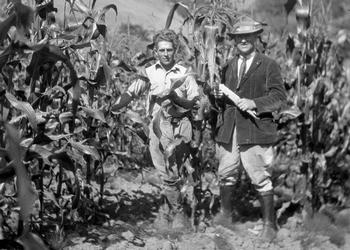
Golden glow corn on S.L. Mazza Ranch, Boyd Stewart and M.B. Boissevain, Olema, 1922
|
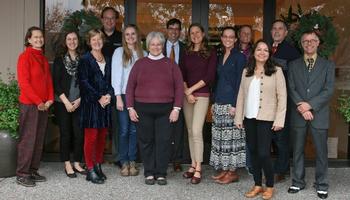
UC Cooperative Extension Marin Team, Novato, 2019
|
|
Serving Marin in the Field and on the Ground 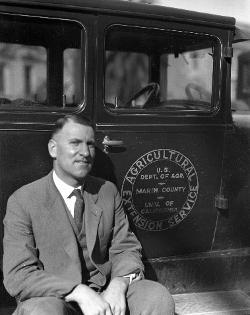
M.B. Boissevain, Marin first Farm Advisor, sitting on the running board of his Model T Ford, 1928
|
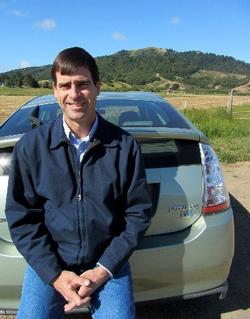
David Lewis, current Director and Farm Advisor, sitting on the bumper of a Toyota Prius, 2012
|
|
Poultry Production 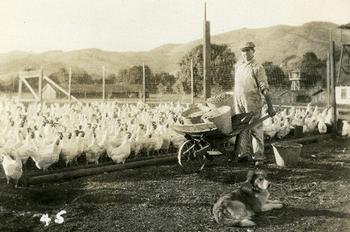
Man with wheelbarrow and white leghorns, Otto Gearhart Poultry Ranch, Novato, 1924
|
Poultry production has grown since 2000 in Marin to nearly 15% of the total annual crop value today. We are providing training and land use policy support for Marin’s producers who are raising pastured based layers and broilers. These farmers are selling direct to their customers on-farm and in farmers markets. Learn more about on-farm poultry production online. 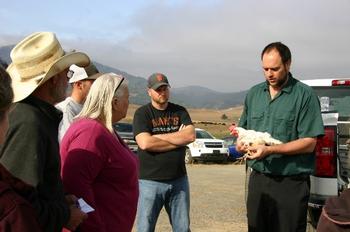
On-farm pasture poultry shortcourse, Hicks Valley, 2017
|
|
Cultivating Youth Life and Leadership Skills 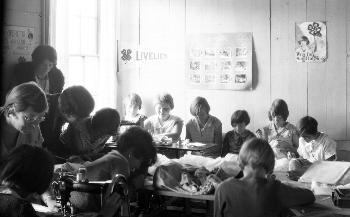
The Novato 4-H sewing club, Novato Farm Center, 1930
|
The 4-H youth development program provides opportunities for diverse Marin youth through 4-H clubs, summer camp, and afterschool programs. These include hands-on science, technology, engineering, math, healthy living, and civic engagement projects. They also offer community engagement, public speaking, and leadership skill building (learn more). 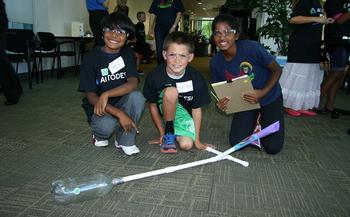
Rockets to the Rescue science partnership with Autodesk, San Rafael, 2014
|
|
Support for the Home Gardener 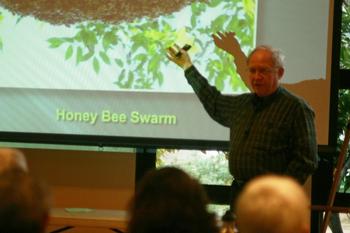
Marin Master Gardener Lad Stevenpiper presenting information about bees in the ?garden, 2007
|
The ranks of the UC Marin Master Gardeners now exceed 350 volunteers. They publish weekly articles in the Marin Independent Journal and their online newsletter the Leaflet. They are delivering important information for homeowners on food-smart, climate-wise, and fire-smart gardening and landscaping. You will find them at the local farmers market, community and school gardens, and making presentation at libraries and other locations. 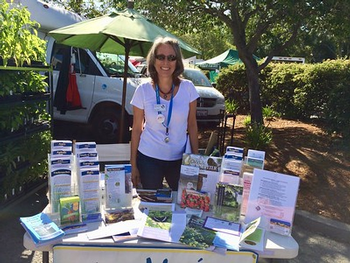
Marin Master Gardener Fay Mark staffing an education booth at the San Rafael ?Farmers Market, 2019
|
|
Strengthening the Community and Local Food System 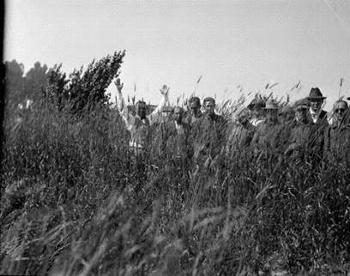
Forage crop demonstration, San Rafael, 1926
|
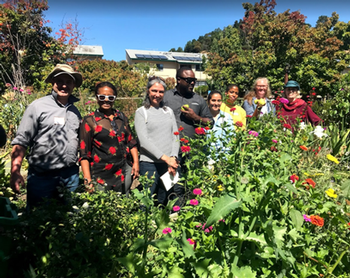
Community Garden Tour, Fairfax, 2019
|
|
Livestock Care and Handling 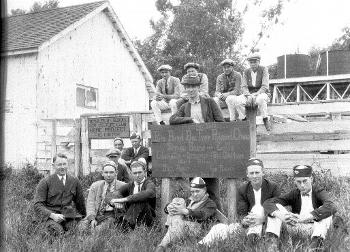
Tomales Joint Union High School Agriculture Tour, Spring 1924
|
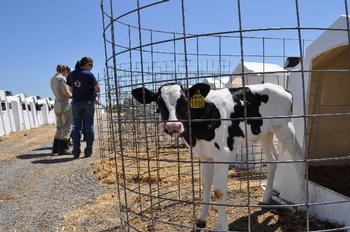
Dairy science team evaluating calf respitory health and use of practices to reduce disease spread
|
|
Helping Conserve and Use Water Wisely 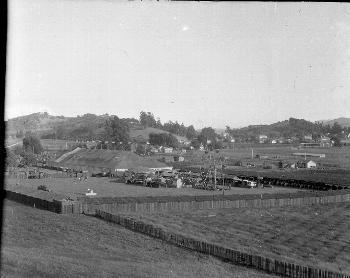
Marin County Fair, Novato, 1926
|
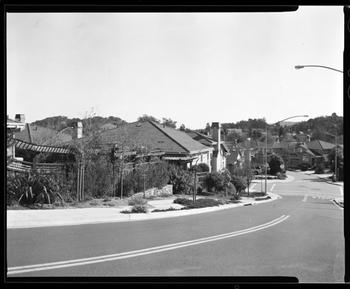
Pinheiro at Ranch Road, Novato 2012
|
|
Generations of Las Posadas 4-H Summer Camp 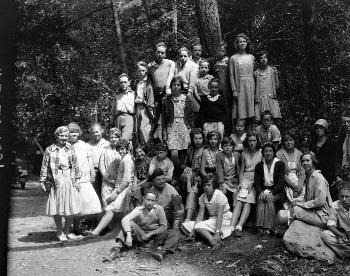
Early years of Marin 4-H summer camp at Los Posadas, circa 1930s
|
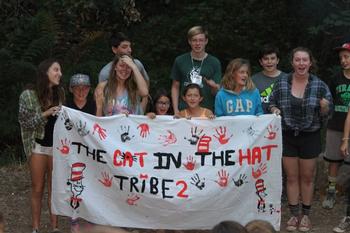
Youth campers participating in a week’s worth of Los Posadas 4-H Summer Camp in 2019
|
|
Spuds from the Past to the Present 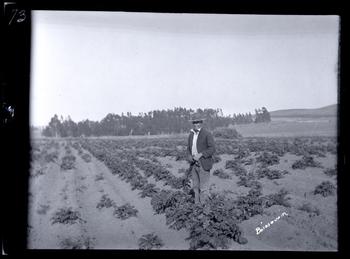
Will Bragga, a member of the potato club in Tomales, July 1922
|
Potato production continues today through the commitment of David Little and his Little Organic Farm, among others. We are working with farmers to resurrect the British Queen – a variety once grown widely in Marin and known affectionately as the “Tomales Queenie”. Melissa Poncia Williams and Jessica Poncia Valentine are developing Poncia Spirits – a line of potato vodka built around the British Queen and the recently restored Bodega Red potato. Their great grandfather, Angelo, provided the seed potatoes for farmers to grow the British Queen for dinner tables. Today, his descendants are bringing this variety back, adding their own modern twist. 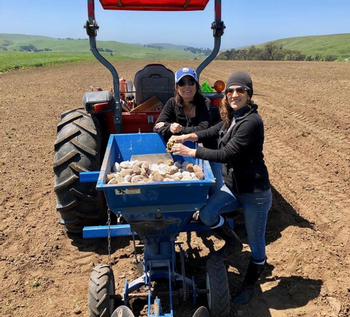
Melissa Williams and Jessica Valentine planting for a trial run of their vodka in 2019
|
|
Managing the Forest Under our Feet and Over our Heads 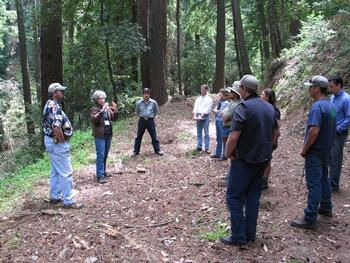
Sudden Oak Death forest walk, Corte Madera, 2014
|
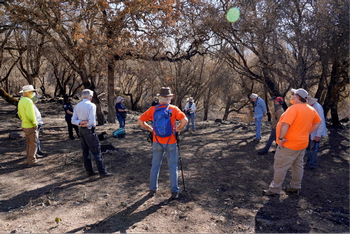
Community gathers to discuss post-fire recovery, Monan’s Rill, 2020
|
|
The Quality and Quantity of Local Dairy Products 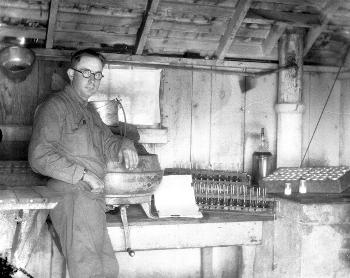
Cow tester, C.C. Goodale on Dan Bondietti Ranch, Tomales 1923
|
Diversification in Marin dairy farming has been crucial to continued success of individual farms. This has included transitioning to organic production, like through Marin Organic Certified Agriculture. It also includes farmstead and artisan cheese that can be discovered through the California Cheese Trail. We continue to support ranchers in their diversification through consultation and with resources like Grown In Marin. 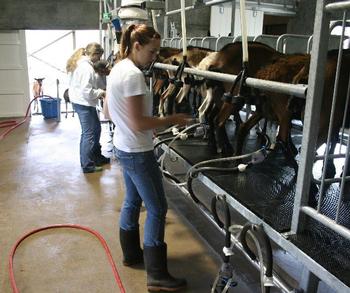
Milking parlor on Toluma Farms goat and sheep dairy, Tomales 2014
|
|
Two Blades of Grass and Farm Sustainability 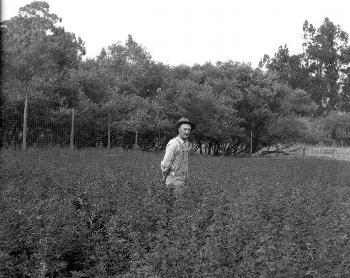
Peas and vetch planted in the chicken yard, A.L. Cunnighame, Fallon, 1929
|
Marin’s ranchers are actively implementing Climate Smart and Healthy Soils practices on their ranches. This includes installing solar panels, using compost for bedding, applying compost to increase soil health, and other practices. These practices contribute to the sustainability and stewardship of participating ranches. We are assisting ranchers with applications to state and federal funding opportunities for these practices and collaborating on the Agriculture Chapter in Marin’s Climate Action Plan 2030. 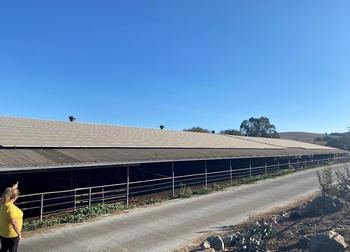
Recently installed solar panels on a Marin Dairy, Tomales, 2019
|
|
School and Community Gardens Spread Across Marin Delivering innovations to Marin residents for growing crops, raising livestock, and managing farms and homes was a priority for M.B. Boissevain. One of the ways this was accomplished was through the tours and trips led by Tomales High School Agriculture Teacher William Reasoner. These trips provided participants firsthand exposure to different crop varieties, rearing practices, and other technologies, as inspiration for improvements both on their farms and in their communities. 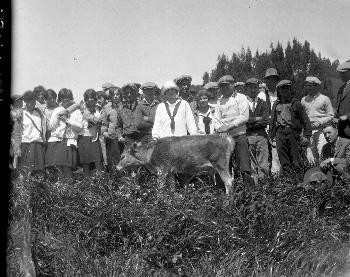
Tomales High School Project and Trip, April 1927
|
Today, Marin residents benefit from 138 community and school gardens. This is an increase from the 86 that were identified in 2010. Within each garden, gardeners exchange ideas for tending their plots. Similarly, community garden managers share resources and management strategies across the county. Our Community Garden Team provides the networking capacity through tours, workshops, and the Marin Community Gardens Map. They have guidance for how to start a community garden and resources for managing them. Learn more about Marin’s community gardens in the 2nd edition of A Garden for Everyone. 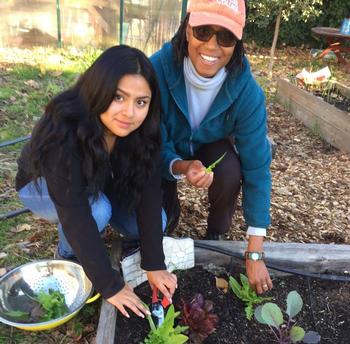
Marin Oaks High School Garden Dirt Club, Novato, 2016
|
|
Marin’s Endowment, its Open and Connected Landscape 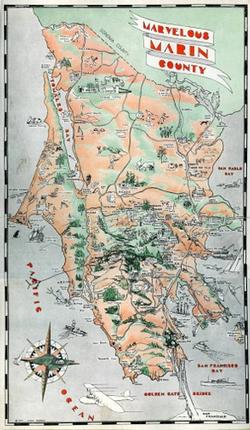
Marvelous Marin Map, 1925 (Anne T. Kent California Room, Marin County Free Library)
|
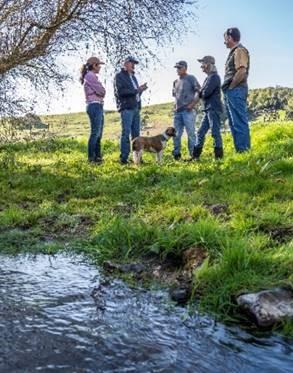
Discussing stream and ranch management, West Marin, 2019 (Hector Amezcua)
|
|
The Thread of Partnership and Collaboration
A century of service deserves some attention and reflection. These “Then and Now” stories have been a small way to adapt to our times and join you in commemorating the 100th anniversary for UC Cooperative Extension Marin. We hope you have enjoyed the few examples selected from many past and present stories. As was shared in the introduction to these stories, “this centennial is an opportunity to celebrate the pleasure and privilege it is to serve Marin.” The pleasure comes from making a difference for Marin residents through education and innovation. The privilege comes from being part of so many wonderful collaborations. From 1920 to 2020 we have been fortunate to live and work in Marin, adding University of California information and expertise to Marin’s capacity and knowledge. Looking to 2021 and the next 100 years, we look forward to making a difference through continued and future partnerships. On behalf of those that have served before us and those that will serve after us, thank you for the opportunity to be part of Marin and serve its people and lands. 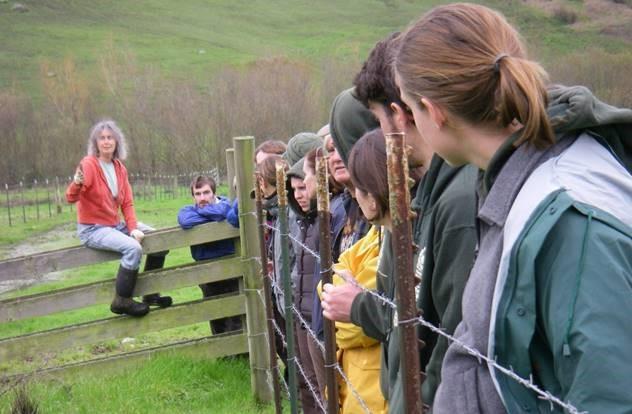
Ranch tour for Conservation Corps North Bay naturalist training, Chilleno Valley, 2010
|
|
